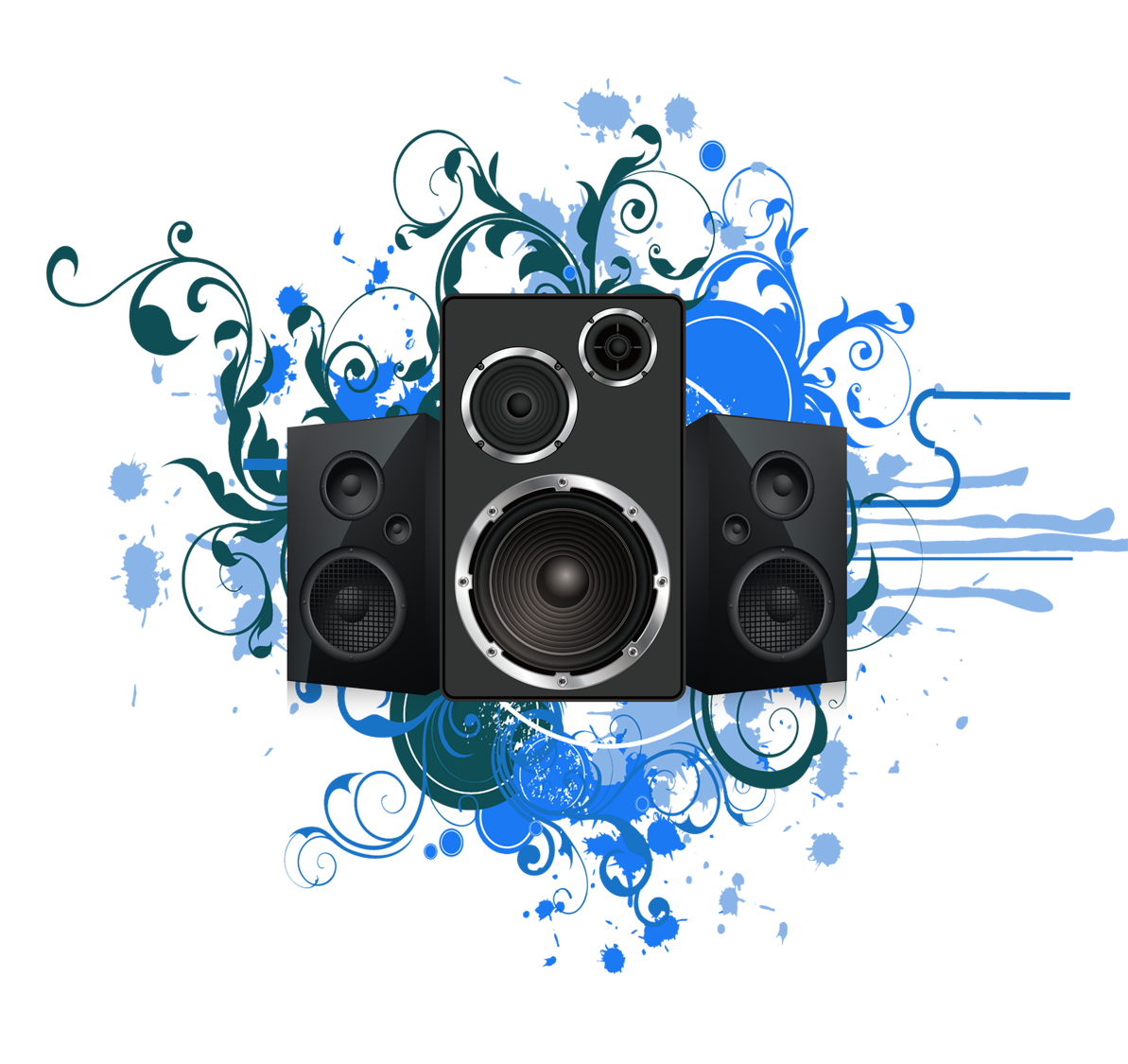Дизайн и управление
Про внешний вид, пожалуй, тут особо рассказывать нечего: компактный брусочек из чёрного алюминия со стеклянной передней панелью. Модный «2.5D эффект» в наличии. В верхней части панели находится подсвеченный логотип FiiO, он же выступает в роли универсального индикатора: меняет цвета в зависимости от используемого кодека и указывает на разрядку/зарядку аккумулятора. Сразу скажу, что идея со сменой цветов — завораживает, я минут 10 развлекался, переключая кодеки в M7, раз за разом убеждаясь, что переключение действительно работает.
На правой грани находятся кнопка включения/выключения, отверстие микрофона, отдельная «умная» кнопка, отвечающая за воспроизведение и паузу, вызов голосового помощника и многие другие функции, а так же качелька громкости. Короткие нажатия на неё изменяют громкость, длинные — переключают треки. Тут, кстати, есть одна особенность, которая для меня выглядит вполне логично, но отзывы в интернете говорят, что не все разделяют моё мнение. Дело в том, что нажатие качельки вверх увеличивает громкость, но при этом, длинное её удержание вызывает переход на предыдущий трек, и многих это сбивает с толку. Для меня же это выглядит логично, так как условный индикатор громкости всегда растёт вверх, а список треков, наоборот, идёт сверху вниз, поэтому такая работа этих клавиш мне кажется вполне нормальной. Впрочем, почти наверняка, со временем регулировку этого поведения добавят во встроенную утилиту настроек.
Все кнопки сделаны качественно, они не болтаются, обладают приятным ходом и чётким щелчком.
Отдельно стоит отметить, что BTR3 обладает своей регулировкой громкости, не влияющей на устройство, в теории это позволяет вам более гибко подбирать комфортный диапазон регулировки. Так же он не поддерживает гарнитуры на наушниках, используется только встроенный микрофон и кнопки управления. Тут, правда, никто и не обещал поддержки гарнитур, но для некоторых это почему-то становится сюрпризом. Если поднести его поближе к лицу, встроенный микрофон работает достаточно хорошо, видимо, Qualcomm не зря разрабатывал свою технологию шумоподавления, а вот на расстоянии дальше чем «на воротнике», ограничения одномикрофонной схемы дают себя знать.
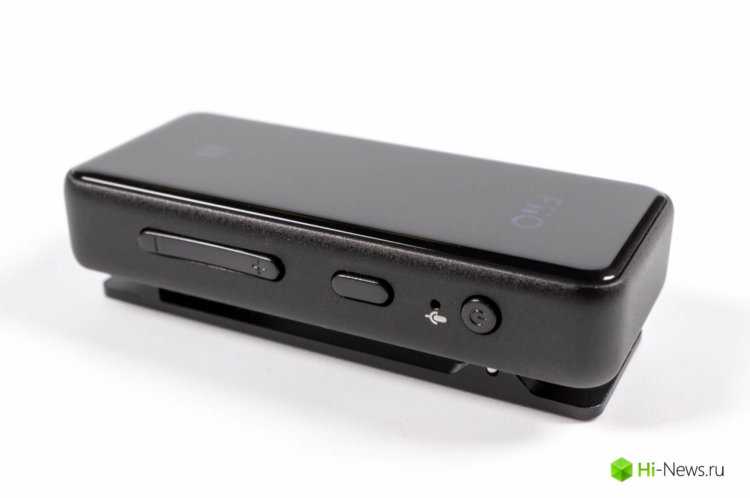
Разумеется, на «внутренней» стороне гаджета сделана клипса для крепления к одежде, она достаточно прочная, с хорошей пружиной.
И USB вход, и наушниковый выход расположены снизу, поэтому крупные 3.5 мм штекеры сложно использовать одновременно с подключенным USB. Для зарядки используется USB-C, полностью BTR3 заряжается где-то за 1 час 20 минут и этого хватает на 9-11 часов активного использования. Так же этот порт можно использовать для того чтоб подключить ресивер в роли USB ЦАПа, в первой версии прошивки для этого надо было включать специальный режим вручную, но последние прошивки добавили режим автоопределения.
Кстати, о прошивках, FiiO уже пару раз обновляли ПО этого устройства, добавив туда помимо прочего возможность конфигурирования BTR3 с помощью приложения FiiO Music на совместимых устройствах. Настроек пока немного (баланс каналов, фильтр, кодеки, индикатор), но, надеюсь, со временем их станет больше. Для установки апдейта нужен компьютер с Windows, поэтому я так же надеюсь, что в будущем добавят и беспроводное обновление.
Один из самых интересных вопросов, конечно, это качество связи. Тут всё относительно и зависит во-первых от источников, а, во-вторых, от количества электромагнитных помех вокруг вас. Плюс, конечно, свою роль играют используемые кодеки, тот же LDAC в режимах «качество звука» и «надёжность соединения» — очень заметно отличается по надёжности. В целом, я проблем с BTR3 не испытывал, используя кодеки aptX, AAC и LDAC в режиме «надёжность соединения», до 15 метров в области прямой видимости он держит легко, при наличии не капитальной стены с дверью расстояние уменьшается где-то до 10 метров. Сценарии вроде «ресивер в одном кармане, источник в противоположном» отрабатываются без проблем.
Последнее время FiiO начали активно осваивать новый кодек LHDC, являющийся конкурентом LDAC от Huawei. Его поддержка появилась и в BTR3 и в плеерах FiiO. По результатам экспериментов его «устойчивость» оказалась где-то на между LDAC «качество звука» и LDAC «стандартный».
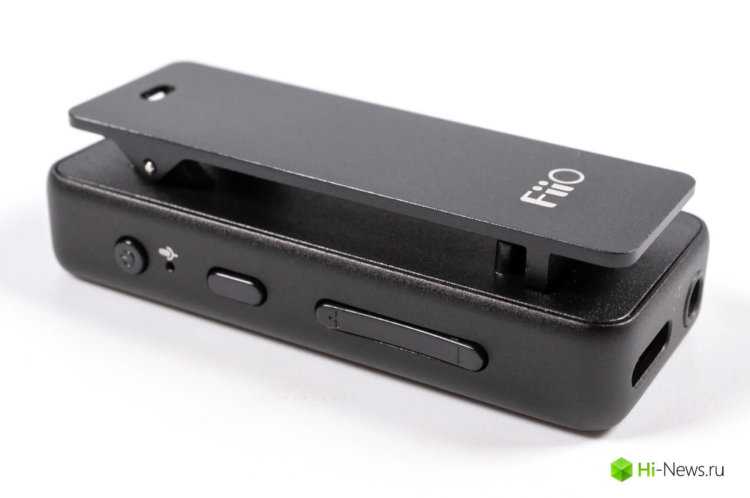
Non condition Returns
We offer a 7-Day Return Policy. You have 7 days to return an item from the date that you received it. (confirmed by Shipping Tracking record). To be eligible for a return, your item must be unused and in the same condition that you received it. It must also be in it’s original packaging. If it is plastic sealled when you get it , it should remain plastic sealled. Some types of goods such as CIEMs cannot be returned.
You will be responsible for paying the shipping costs for returning your item. Shipping costs we send the product to you are non-refundable( write us in advance how much it is)and Custom Duty when it come back to China is non-refundable too ( we will send you receipt after we get it ). If 7 days have gone by since you received your item, unfortunately, we can’t offer you a refund or exchange.
Технические характеристики
- Bluetooth чип: CSR8675
- ЦАП: AK4376A
- Bluetooth: 4.2 с поддержкой кодеков AAC, SBC, aptX, aptX LL, aptX HD, LDAC, LHDC
- Диапазон частот: 20 Гц ~ 20 кГц по aptX, 20 Гц ~ 40 кГц по LDAC
- Выходная мощность: 25 мВт @ 32Ω, 33 мВт @ 16Ω
- Выходной импеданс: <0.3Ω
- Рекомендуемый импеданс нагрузки: 16Ω ~ 100Ω
- Общие гармонические искажения+шум: <0.003% по LHDC
- Соотношение сигнал/шум: 120 дБ
- Разделение каналов: ≥75 дБ
- Вход: USB-C
- Выход: 3.5 мм TRS
- Микрофон: встроенный с технологией шумоподавления Qualcomm cVc
- Батарея: 300 мА/ч
- Время зарядки: ≤1.5 часов
- Время работы: до 11 часов
- Размеры: 58×25×10.4
- Вес: 26 гр.
Звук
Для прослушивания устройства использовались следующие наушники: iBasso IT04, Meze 99 Classics, Audio Zenith PMx2, Noble Kaiser Encore, Campfire Audio Andromeda, Unique Melody Mason V3, HUM Pristine и другие.
В этот раз я, пожалуй, не буду расписывать звук подробно, в силу малой осмысленности подобного занятия. BTR3 играет ровно, без ярко выраженной окраски или заметных проблем. Точнее проблема у него основная состоит именно в беспроводной передаче данных. Тот же BTR1 в роли основной проблемы имел некоторую синтетичность на ВСЧ и ВЧ, тут её меньше, но во многом она зависит от используемых кодеков. Поэтому, думаю, лучше поговорить именно о них.
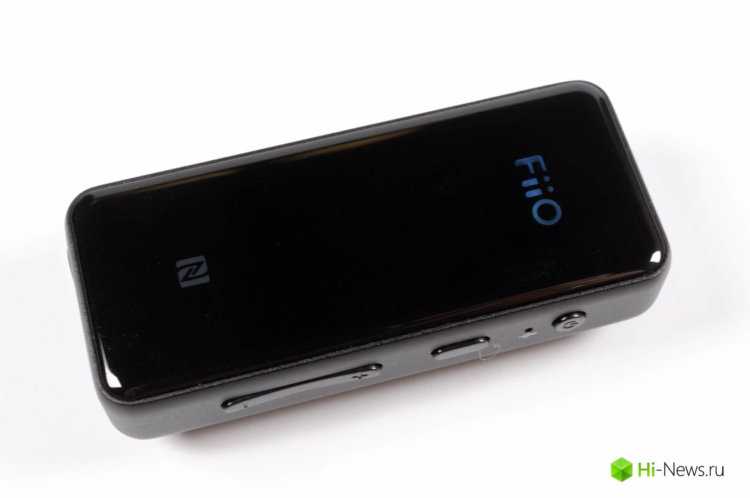
SBC Самый «базовый» кодек, который с нами много лет. По звуку примерно похож на MP3 в 128 битрейте сжатый качественным кодеком. Теряются послезвучия, сцена плоская, ВЧ отдают синтетикой. Почти на любой музыке, кроме совсем уж плохо записанной, разница хорошо заметна, даже на недорогих наушниках. Хотя справедливости ради, стоит отметить, что очень много телефонов по проводу звучит или хуже или не особо лучше.
aptX Пожалуй, самый заметный шаг вперёд относительно SBC. Воображаемая сцена обретает глубину, послезвучия в нижней половине спектра появляются, но не все, синтетичности в верхней половине меньше, но на хороших наушниках она по-прежнему заметна. Отставание по качеству 3.5 мм выхода большинства телефонов становится заметней.
AAC Фирменный кодек Apple, во многом страдающий из-за тенденции компании не раскрывать свои технологии. Несмотря на свою lossy природу и достаточно сильную компрессию в верхней части АЧХ, использует какие-то фирменные наработки по обману слуха, что позволяет ему часто звучать лучше чем aptX, особенно в нижней половине диапазона. Впрочем, на нормальной музыке с приличными наушниками заметная разница всё ещё есть.
aptX HD Увеличение битрейта примерно в 2 раза даёт себя знать и особенно от этого выигрывают ВЧ, обретающие почти «настоящую» натуральность. Послезвучия по-прежнему есть не все, особенно те, что должны «стремиться ввысь», но тут для того чтоб услышать разницу надо немного вслушиваться.
LDAC Standard Бегло сравнив три режима работы LDAC я решил в финальном слепом тесте ограничиться именно средним, как наиболее оправданным в повседневном использовании, так как режим «надёжность соединения» по звуку стремится в сторону aptX HD, а режим «качество звука» даёт не особо большой прирост, ухудшая общую надёжность подключения. В общем, в случае LDAC, ожидаемо, разница ещё меньше, но что интересно — заметна она больше всего на ВСЧ, там появляется некоторая упрощённость. Зато по отработке обертонов этот кодек умеренноы близко подходит к проводному соединению. Так же заметна нехватка протяжённости самых верхних ВЧ, но у других кодеков она ещё заметней.
LHDC Кодек, почти сравнимый с LDAC, в ходе тестов я, пожалуй, не смог определиться, хуже он, или просто другой. Наверное, он всё же чуть проще LDAC по проработке НЧ и СЧ диапазона, зато верхняя половина диапазона удаётся ему чуть лучше. Впрочем, в большинстве жанров всё-таки «нижняя половина» играет более важную роль, поэтому для «массовой» музыки LDAC будет предпочтительней, а для «высокого искусства» выбор будет определятся вкусами слушателя.
Весьма хорошо BTR3 показывает себя в режиме ЦАПа, практически все артефакты беспроводной передачи уходят, и остаётся нейтральный, динамичный звук со сбалансированной весомостью и естественностью. Разумеется, дорогие портативные ЦАПы будут заметно лучше, но в качестве бюджетного решения для смартфона или ноутбука, герой сегодняшнего обзора показывает себя отлично.
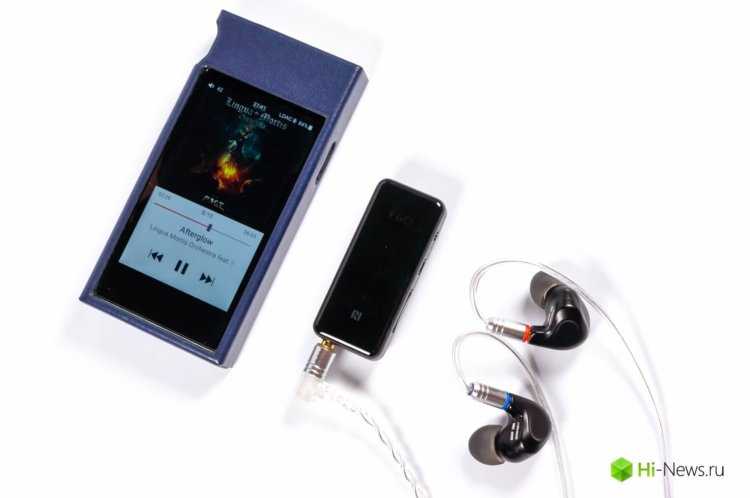
FiiO BTA30 Technical Specifications
- Weight About 115g
- Dimensions 120x55x23.5mm
- Bluetooth chip CSR8675
- Bluetooth version 5.0
- DSP chip CT5302
- DAC chip AK4490
- Audio op-amp OPA1662
- Optical decoding support 96k/24bit
- Bluetooth receive formats support SBC/AAC/aptX/aptX HD/LDAC
- Bluetooth transmit format support SBC/aptX/aptX LL/aptX HD/LDAC
- Coaxial decoding support 192k/24bit; DSD64 (dop)
- USB DAC 44.1/48k-16bit(44.1k is not supported in TX mode)
- Transmission distance Approx. 30m (no obstacles, SBC codec)
- Hands-free calls, microphone Not supported
- Analog output RCA (Max 3Vrms)
- Digital output Optical + Coaxial
- Digital input Optical + Coaxial + USB
- RCA out THD+N 0.002% (SPDIF 48k/24bit input, 1kHz -3dB)
- RCA output SNR 115dB
- Digital out sampling rate Can be upsampled to 192k/24bit
- USB interface Type C
- Antenna interface BNC2.5
- App control supported
- Accessories included Quick Start Guide*1, Warranty Card*1, Type C cable*1, RCA cable*1, Isolation Feet*8
Our Verdict
The FiiO BTA30 connects with almost everything, boots instantly, and is stunningly convenient to pair up with different devices. The sound performance and stability are more than satisfactory, so also the user experience.
It is a unique product and works great as a complement to other gears, breathing new life into devices that once shine but were left idling in the wireless era. Just click to connect and your setup turns wireless the next time.
The BTA30 is a small device and may be underlooked at just $89.99 but it fuses a lot of modern functions with an advanced control app that empowers it to be extremely flexible and functional.
This is easily the best Bluetooth receiver and transmitter in the market right now at this price point, filling the void between wireless and traditional devices.
FAQs
Can I cancel an order?
Once an order is placed, you have less than 24 hours to cancel it if it is not processed yet. Once the order processes and is accepted by our warehouse, you may still request cancellation, however please know that cancellation at that stage is not guaranteed.
Can I return the products that I don’t like and get a refund?
You may request to return an item in the condition it was received if you change your mind. Some items may be returned for either money back or exchange subject to the following conditions. Our policy is within 7days after receiving according to the tracking record. If 7 days after receiving have gone , unfortunately we can’t offer you a refund or exchange.
How long is the warranty period?
an data-preserver-spaces=»true»>HiFiGo warrants to the original purchaser that the Product(s) shall be free of any defect in material or workmanship for a period of one year for labor and one year for parts from the date of the original order except the items listed below:
Desktop DAC/AMPs : 2 years warranty
IEMs and dongles: 1 year warranty
Accessories: 3-6 months warranty according to brands policy
Should the Product(s) supplied by HiFiGo prove defective because of improper workmanship or material as reasonably determined by us, HiFiGo agrees, at its option, to either repair or replace the Product free of charge, excluding any shipping or handling charges.
This warranty extends only to personal use & does not extend to any product that has been used for commercial use, rental use, or use which is not intended. There are no warranties other than expressly set forth herein.
THE WARRANTY DOES NOT APPLY TO THE FOLLOWING
- Damage due to user negligence, accidents, dis-assembly, waterlog, misuse, abuse, alterations or vandalism.
- Improper or inadequate maintenance.
- Failure to perform required preventive maintenance
- use not following the ‘User Guide’ or any additional safety, use, or warnings included in the product materials.
- Unauthorized modification or commercial use.
- Damage in return transit.
- Unsupervised use by children under 18 years of age.
- Accidents, abuse, misuse, improper installation, problems with electrical power, acts of third parties.
- Products that are altered or repaired by anyone not authorized by HiFiGo
- usage not following instructions accompanying the Product(s)
- failure to perform required preventive maintenance,
- weather conditions, lightning, fire, water, or any acts of nature
- Furthermore, HiFiGo is not liable for incidental or consequential damages of any nature resulting from the use of this product and any liability shall not exceed the purchase price of the product.
Disclaimer of Warranties — Except as set forth herein, HiFiGo disclaims any and all warranties and representations other than those explicitly specified in this contract; any warranties, if separately provided in writing, are extended only to the Buyer whose name is shown on this invoice/contract. Warranties do not cover product damaged by external causes, including accident, abuse, misuse, improper installation, problems with electrical power, acts of third parties, Products that are altered or repaired by anyone not authorized by HiFiGo, usage not following instructions accompanying the Product(s), or failure to perform required preventive maintenance, including but not limited to backups, problems caused by use of software, parts and components not supplied by HiFiGo, weather conditions, lightning, fire, water, or any acts of nature; HiFiGo shall not be obligated to provide any warranty service or obligations unless customer has paid its invoices in full under this or any other HiFiGo invoice. HiFiGo shall have the sole discretion in determining whether the Product is covered under the warranty for labor and/or warranty for parts
Governing Law — This contract shall be governed and construed per the laws of the People’s Republic of China. Buyer agrees that competent courts in the People’s Republic of China shall have the exclusive jurisdiction over any legal action concerning this contract. In the event of any dispute related to this contract, the prevailing party shall be entitled to reasonable attorneys’ fee and costs.
Refunds
We may refund you for following reasons,
1. Returned items due to the policy of returns once we get it.
2. Order cancellation
3. Other reasons.
If you paid by credit card, It will arrive you within 7 working days usually. The time will depends on the bank handling time. If you pay by paypal, It will arrive you within few hours. If you didnt get the refund during above leadtime, write us to check the reason.
Refunded amount may be slightly different with your original national currency payment due to Currency Exchange rates varying, HiFiGo is not responsible for the difference.
There may be transaction fee deducted by your bank when order is cancelled or refunded fully or partially, HiFiGo is not repsonsible for this if your bank charge you any additional fee.
ADC Volume Control
Like many latest items under FiiO, the BTA30 adopts the ADC volume control, which helps the DAC to achieve excellent channel balance at low volume without pressing down the dynamic range.
I find this feature very friendly as the digital volume isn’t as straightforward and easy to control. The knob is very functional when you use it as a receiver for your speakers as quite some other Bluetooth receivers don’t have a knob type volume control which is fast and handy.
You can remotely control the digital volume with the app or fix the volume using the FiiO control app. If you are using the BTA30 as a transmitter taking signals from USB input, you will need to adjust the volume on the host device.
Scenario Testing
There aren’t many Bluetooth receivers and transmitters here in our office so I am putting up some tests for the BTA30 and see how it fairs with other gear I normally use for streaming.
FiiO K5 Pro Output With & Without BTA30
The K5 Pro pairs very well with the BTA30 to add wireless function to its powerful amplifier and you can stack them up as a small system quite easily.
With the two devices together you can enjoy streaming your TV content wirelessly or Hi-res playback from your gaming devices/DAPs with higher-end audiophile earphones or headphones. This is much more fun and dynamic than using TWS or wireless headphones which are lacking in power and bass power.
Using the BTA30 as an RCA source with the LDAC codec connected to the K5 Pro, the output resolution and quality are similar if not better than the internal DAC on K5 Pro.
There is slightly more warmth perhaps colored by the copper RCA wires and the staging is slightly enlarged. The sound output is quite engaging with plenty of power and air in the bass, a true delight for movies when you stream from your TV.
The BTA30 is doing quite a good job in fighting head to head with an A/C powered device. If you want to enhance the timbre you can get a better RCA cable that may well enhance its dynamic range.
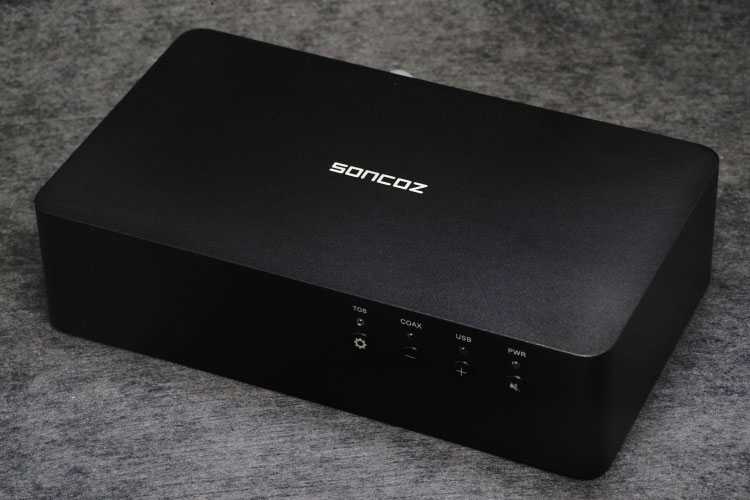
USB input on the Soncoz LA-QXD1
The Soncoz LA-QXD1 is a budget pure DAC that runs on USB power and it really impressed me with its output quality. The BTA30 can be connected to the LA-QXD1 via Toslink input and then it will become a wireless combo. The same could be applied to other DACs that do not integrate wireless receiving solutions.
Comparing the output quality of the LA-QXD1 on USB output and TOS connection via BTA30, I hear very similar qualities. While the TOS input seems to be slightly cleaner in tone and more agile in the bass with firmer impact.
The BTA30 successfully turns the LA-QXD1 into a wireless, full balanced system for active speakers or balanced amplifiers. The tweakable options with the controller app are also very useful for fine adjustment, changing the filter may get you more rounded vocals or slightly more air in the mix.
Testing the ADAM A3X speakers in my living room I can confirm the output quality being consistent to USB outputs connected to the LA-QXD1. When you switch from red book wave to higher resolution files you could feel the density and texture in bass stepping up.
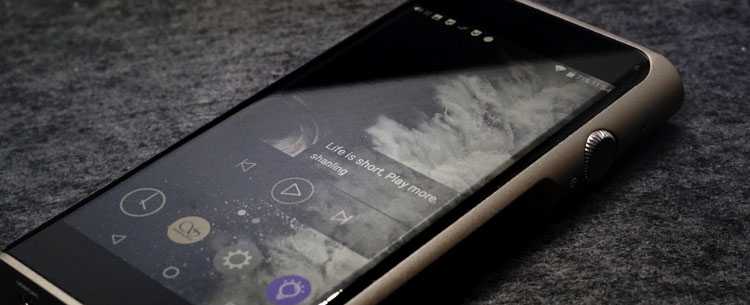
Shanling M6 Pro as a Bluetooth Receiver
Some DAPs support multi-way connections with Bluetooth. I normally hook up the M6 Pro with my power amp from time to time to stream from my laptop or other DAPs. The experience is definitely more enjoyable with the BTA30 as a receiver or transmitter with its richer functions and tweakable options.
I like how FiiO put together the analog volume control with digital settings in the control app. This allows you to turn to a minimum level when first connected to anything with digital volume and memory on the devices. This prevents the inevitable heart attack when switching between gears that have vastly differing volume settings.
Also, to adjust much more easily than digital steps. I am hooking up the M6 Pro to the power amp with an RCA to 3.5mm cable which is similar to the stock cable that comes with the BTA30. At full power output, the BTA30 has better separation in the output and slightly more resolution.
The M6 Pro may pick up some interference or stutter when I move my streaming source around, but the BTA30 is always stable. Also, being able to boot up instantly makes it a clear winner. The M6 Pro is now my Spotify streaming source for the combo and they are an incredibly compact set when paired together.
Technology Inside
DAC
The BTA30 uses an AKM AK4490 chipset implementation, an old but very mature solution used extensively on many portable audio devices, for example, the A&K KANN. With Velvet Sound architecture it is aiming at reproducing natural and smooth sound.
The DAC can decode up to 768kHz PCM and 11.2MHz DSD as well as support for up to 32BIT decoding. However, since the BTA30 is positioned as a Bluetooth receiver, FiiO has limited the decoding rate up to 24BIT/192kHz and DSD64(DoP) with the coaxial input.
According to FiiO, they put some film caps around the circuit to enhance transparency. At the RCA output, a 115dB S/N ratio is achieved.
Upsampling
The BTA30 has an independent high-performance DSP chip to boost any signal at the digital output up to 192kHz. This gives better control and refinement to the output and you can toggle on the upsampling options in the FiiO control app.
Bluetooth 5.0
The BTA30 is designed to be a long-range, high-resolution BT transmitter, fitted with a 2dB antenna that you can upgrade to achieve an even higher range. The CSR8675 Bluetooth solution from Qualcomm powers the machine which integrates a fast DSP engine reaching 120MIPS.
Receiver
The BTA30 receives SBC/AAC/aptX/aptX HD/LDAC codecs up to 24bit/96kHz. You can connect the BTA30 to amplifiers with RCA cables or to other DACs with coaxial/ optical cable, using it as a digital turntable and breathe new life into older gears. The BTA30 allows connection to two host devices at the same time.
As a receiver, you could connect the BTA30 to speakers and amplifiers and stream from your DAP. The higher signal gain with the large antenna promises stable connection over higher hi-res transmission and you can tweak the sound with different options again all in the FiiO controller App.
Transmission
The BTA30 transmits with SBC/aptX/aptX LL(low latency)/aptX HD/LDAC codecs. This includes the low latency aptX codec so you can rely on it as a gaming decoder by choosing the codec as default in the controller app. LDAC is only supported for coaxial/optical input but not USB input.
You can also hook it up with a PlayStation, your TV, or the optical out on your PC motherboard. Imagine you want to watch some movies on your TV at night and you can’t turn up the volume or else the neighbors complain. This is when the BTA30 will be your rescue.
Simply connect to your PC/PlayStation via coaxial or optical then connect to your wireless earphones/headphones and you can get the full sound experience on your sofa. The BTA30 even supports low latency aptX (aptX LL) so you could game with it if you have headphones that support the codec
USB-DAC
The BTA30 supports USB input to decode up to 16bit/48Hz, it also acts as a digital turntable to output 16bit 44.1/48k signals. This is quite basic but if the host device only supports USB output this feature could be helpful.
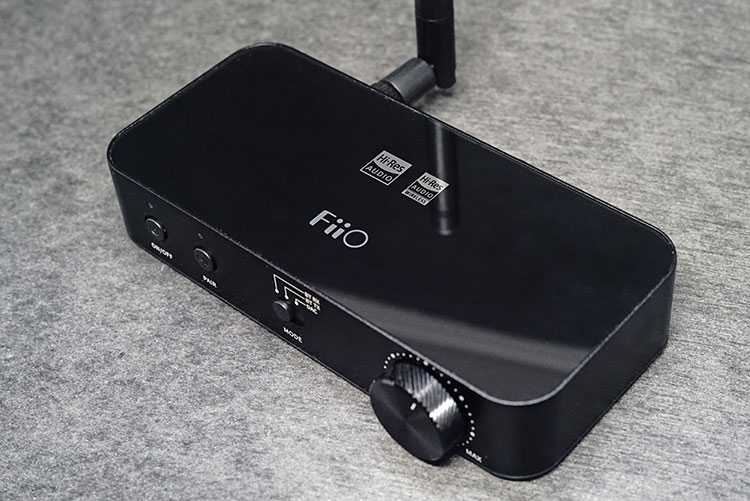
Design
The BTA30 has a small form factor with a relatively industrial design. There is a glass panel that fuses seamlessly with the aluminum alloy chassis and seems like it is derived from the back panel of their M series DAPs. This is much classier than just using aluminum alone.
On the front panel, you will find the on/off button, a pairing button, mode switch (receiver/ transmitter/DAC), and the volume knob. The layout is very clean so you will get an idea of how to make it operate probably without a need to look at the user manual.
All the I/O sits at the back with rubber feet to keep it steady on your desk. This is a very modern design that will fit any desk or living room.
The exterior is very modernly designed with a good effort to shield the unit from EMF interference. There is no sign of buzzing even if you get a call on your phone right near it. This could be quite an issue as there may be loud buzzing noise with some poorly shielded designs.
The BTA30 form factor is very compact and transportable measuring at just 120 x 55 x 23.5mm. It is small enough to fit on desktop space or on DACs and Amplifiers. You can even hook it up to a speaker to make it a wireless setup.
The BTA30 takes power from USB-C input and can be powered by a phone charger or charging bank adding to its portable dimension. You can always try connecting to cleaner power outlets for better noise control.
